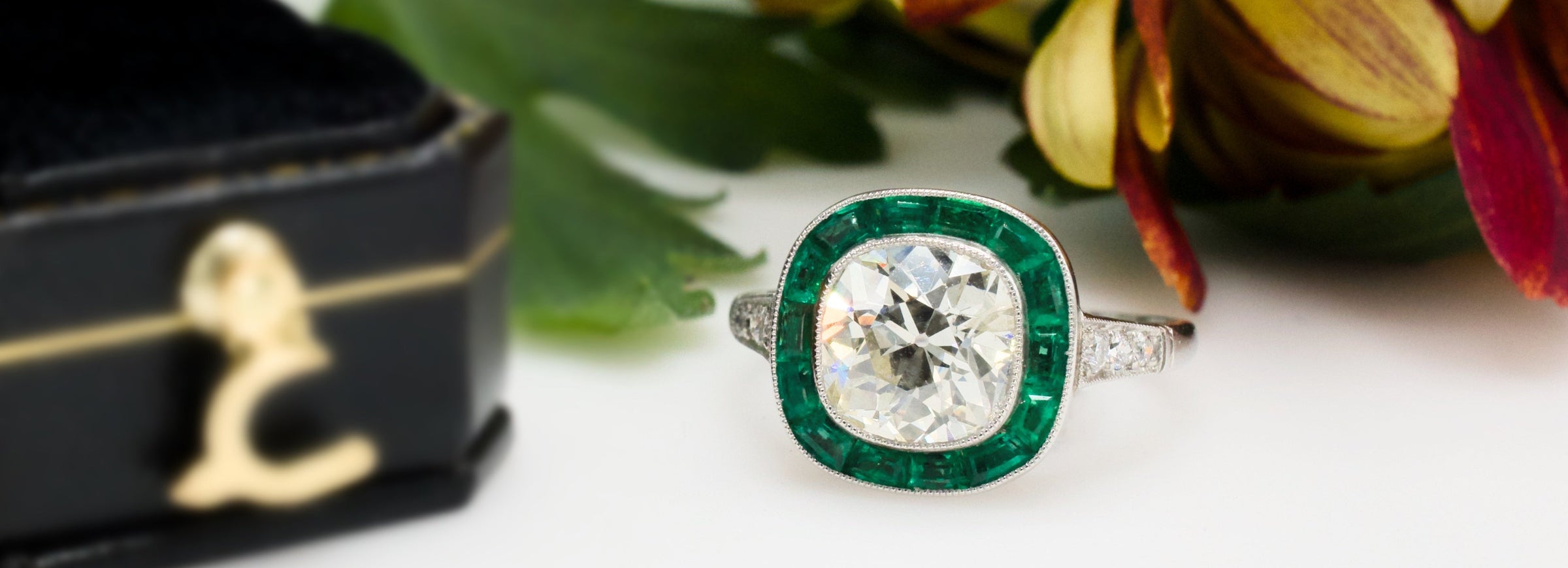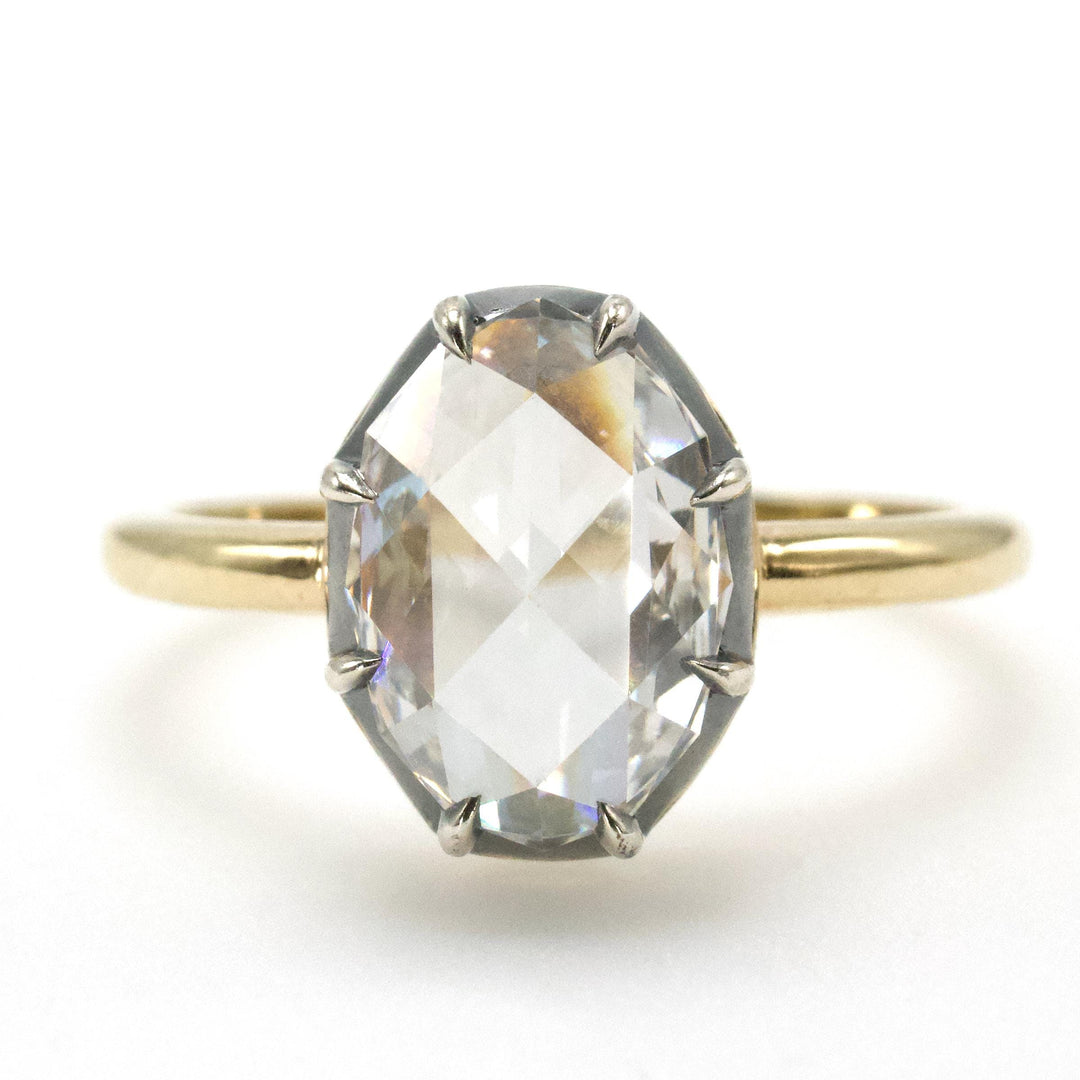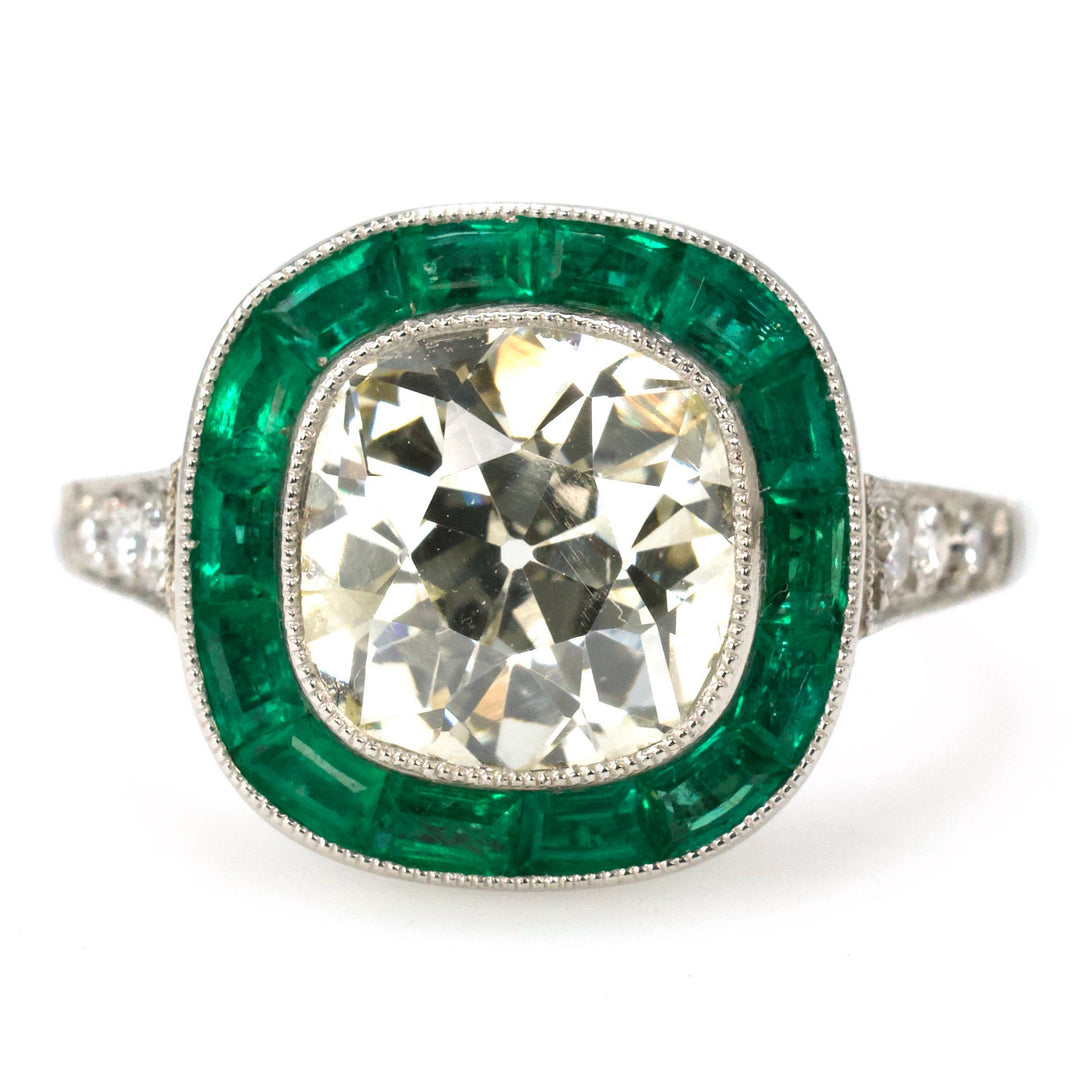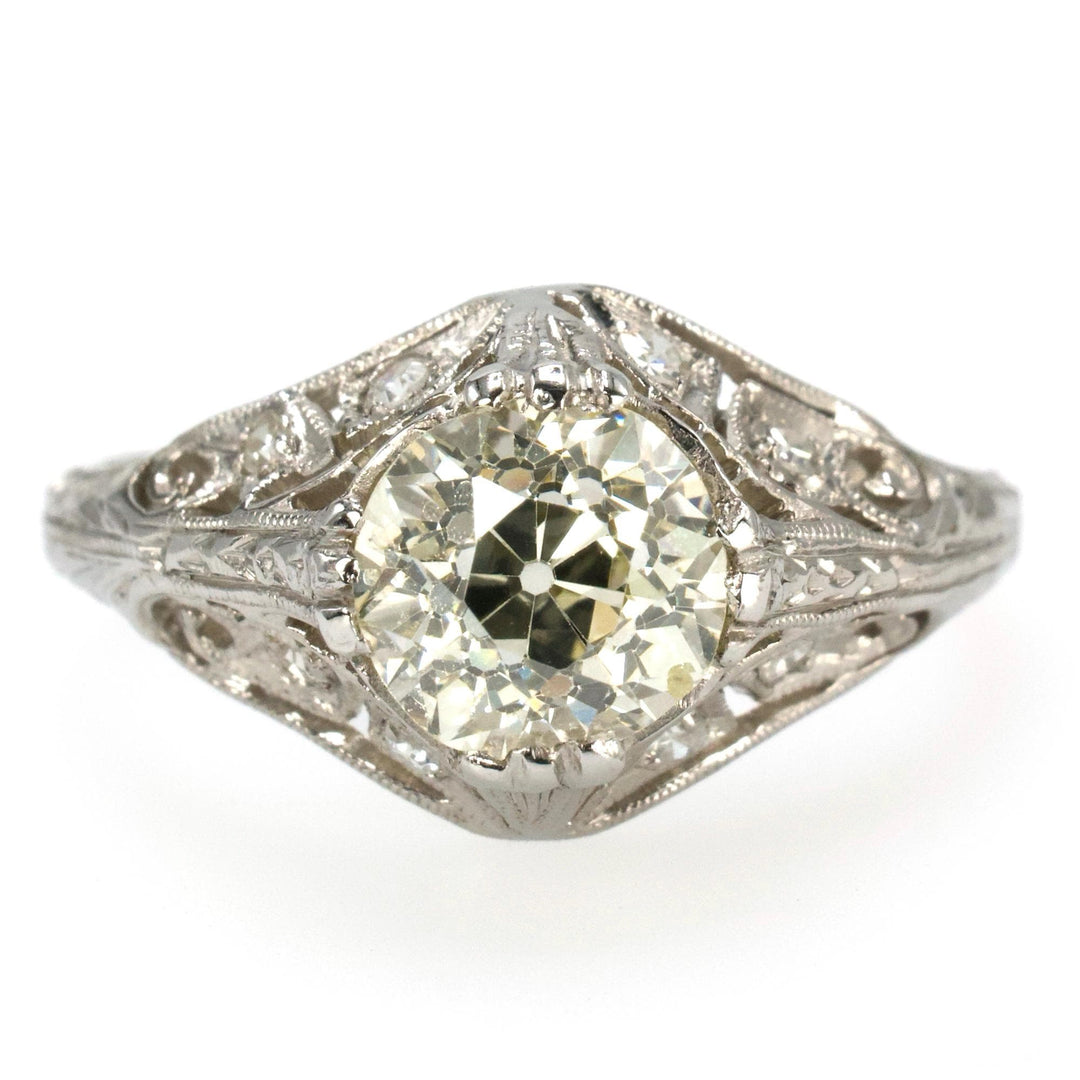
Antique Cut Diamonds
Diamonds have been faceted since the Middle Ages. Before then, they were crudely shaped and polished by rubbing them with other, lesser diamonds.
The cuts we see most frequently in antique jewelry—apart from the modern round brilliant—are the Rose cut, the Old Mine cut, and the Old European cut.
Measured by sight and cut by hand, these stones are full of charm, personality, and—as far as we're concerned—never went out of style.

The Rose Cut
First developed around 1500, the rose cut represented the height of the Renaissance-era diamantaire's skill. An ingenious way to convey diamond's brilliance while maximizing shallow rough, rose cuts are flat bottomed with a domed top containing up to two dozen triangular facets. The Rose cut is most often seen in Georgian and early Victorian jewelry, but is having a modern resurgence.

The Old Mine Cut
A precursor to the modern round brilliant, the Mine cut has a well developed pattern of 58 facets (the same as modern rounds) and a softened square profile that's dictated by the natural shape of the diamond's rough. First appearing in the 18th century, perfectly round diamonds were still impossible to cut due to the inherent limitations of the tools available and the Mine cut represents an evolution of maximizing diamond's brilliance.

The European Cut
Technological advances in the mid to late 1800s led to the creation of the European cut. The most visually similar ancestor of the ubiquitous round brilliant, these diamonds have a circular outline with the same 58 facets, but the facets are chunkier, the table (the top most facet) is smaller, and the crown (everything above the girdle) is taller than the modern stones we all know. These unique features tend to make European cuts slightly heavier than a round brilliant with the same diameter.









